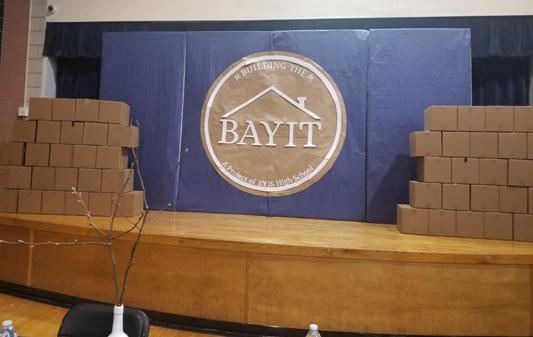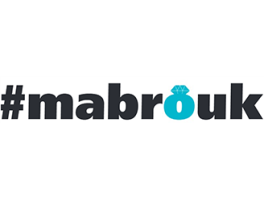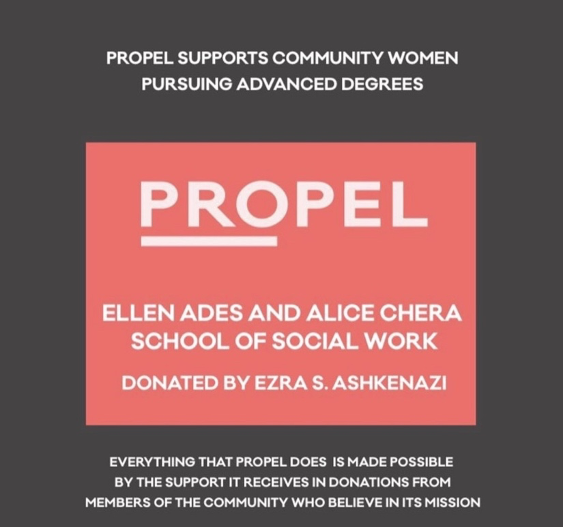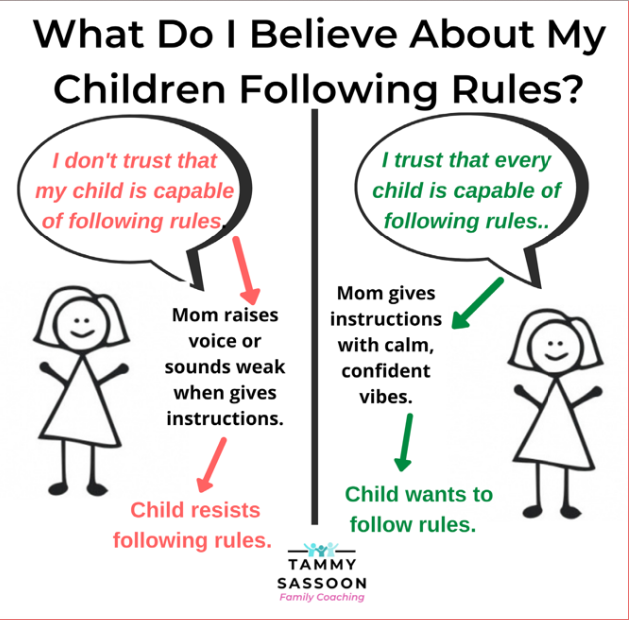This past month, Bet Yaakov of the Jersey Shore High School launched a very special campaign for the women in the community. Bet Yaakov believes that the school is not only a place to educate its students, it’s also a place to disseminate spiritual growth throughout the community.
To that end, the “Build the Bayit” Campaign was launched. At a special mother/daughter Hanukah luncheon a video was shown explaining the details of this campaign. At a time when the world is struggling with many difficulties, the high school girls took it upon themselves to encourage others to bring zechut to our community. The idea of the campaign is to generate zechut toward building the Bayit – the Bayit of Hashem – the Bet Hamikdash. The students of the school got family members to sign up to the program, where every day for 30 days everyone received a text message detailing a small very doable mitsvah to do each day. The misvot were ones that could be done by anyone at any age and any spiritual level that they may be at.
Throughout the month over 200 participants in the program performed these misvot every day. There has been such great feedback from so many participants who have risen to the challenge of taking a step each day to improve their spiritual growth.
Important Community Message About The Monoclonal Antibody Treatment

We would like to bring to the attention of the community the importance of acting IMMEDIATELY after a COVID-19 Positive Test.
After launching a public awareness campaign, and great efforts to make monoclonal antibody treatments available locally, over 125 high risk people who are COVID positive in our community have been successfully treated and some likely have avoided hospitalization. If you test COVID positive and meet the criteria listed by the FDA (found at: https://www.fda.gov/media/143605/download), it is urgent that you obtain an antibody infusion as soon as possible after your positive test.
Our community patient advocates are keeping tabs on where the antibodies are available and how best to schedule you in for a slot. The infusion process is short and you should be back home in a few hours. It is best to get these antibodies as soon as possible after receiving a COVID positive PCR test result.
If you receive the antibody treatment, you should wait 90 days and then consult with your doctor before getting vaccinated. Please contact one of the community patient advocates listed below so that they can work with your doctor and schedule you for the outpatient infusion.
Patient Advocates to Contact
NYC: Alan Esses: 917-969-6620 / Nathan Hoffman 917-681-2969 / Nancy Sutton 718-614-6711
NJ: Maurice Zekaria 732-829-1124 / Ike D. Massry 732-598-9399
Florida: Gershon Fink, MD 786-521-1587 / Baruch Sandhaus 786-626-6261
Medical Centers offering Monoclonal Antibodies for Outpatient Infusion
- Mt. Sinai
- New York Community Hospital
- Maimonides
- HNMC, Teaneck
- Monmouth Medical Center
- Mt. Sinai of Miami Beach
- Memorial Hospital
- Aventura Hospital
New Jersey Expands Coronavirus Vaccinations to Seniors, Medical Conditions, and Smokers

New Jersey has opened up COVID-19 vaccinations to residents 65 and older, as well as those from 16 to 64 with serious medical conditions or who are smokers.
“Over the last several months, our administration has built the infrastructure and laid the groundwork to support New Jersey’s COVID-19 vaccination demand,” Governor Phil Murphy said. “Based on recommendations from the Centers for Disease Control and Prevention, we are ready to begin ramping up our vaccination efforts exponentially and are confident in our ability to provide every willing New Jersey resident with a vaccine when it is available and they are eligible.”
Those chronic conditions that allow for eligibility include: cancer, chronic kidney disease, chronic obstructive pulmonary disease (COPD), Down syndrome, heart conditions, obesity, sickle cell disease, type 2 diabetes, and smokers.















